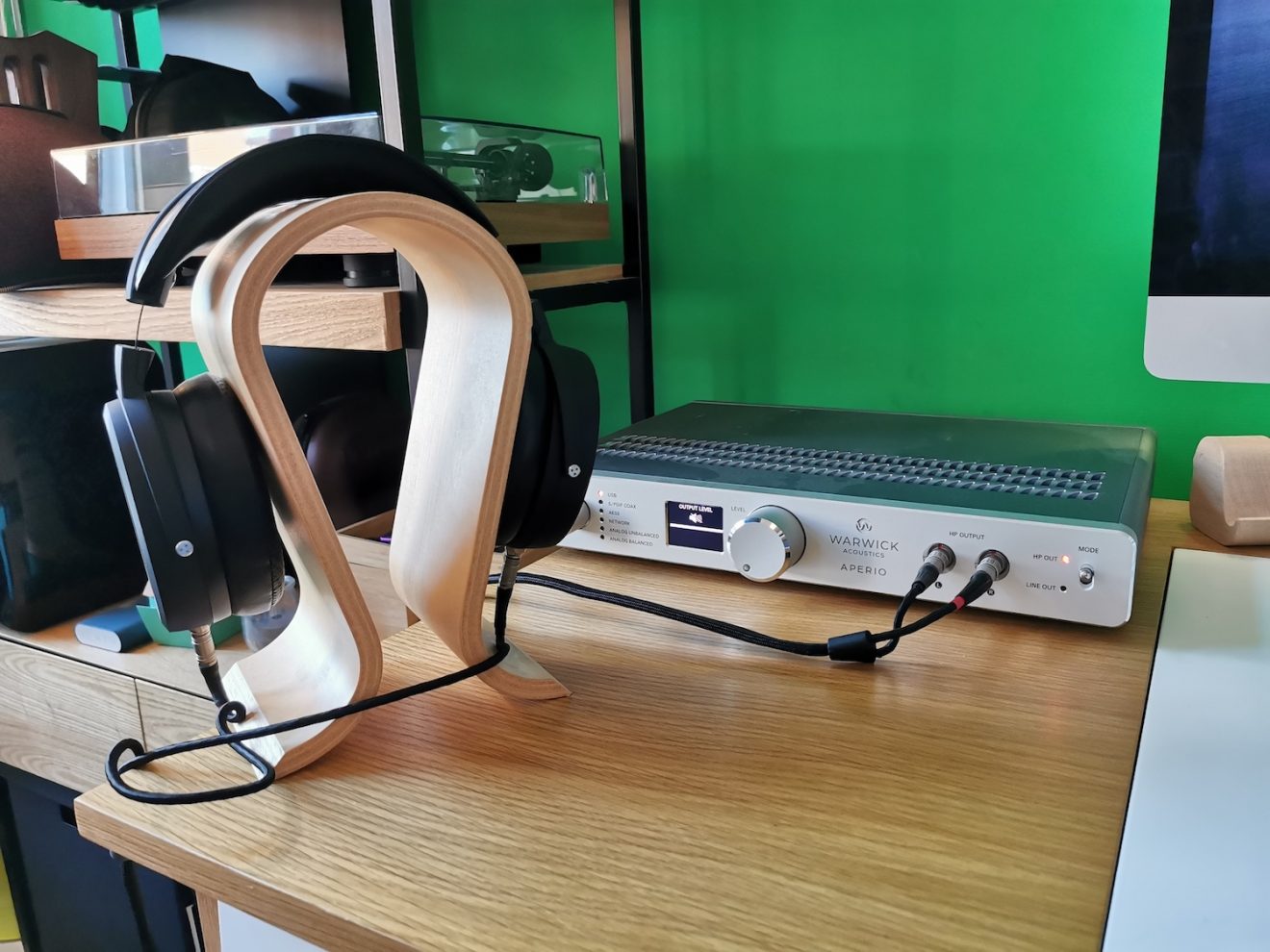Review: Warwick Acoustics Aperio – Electrostatic headphones have their own group of convinced supporters, who have no problems paying a little more for a high-end product. But there doesn’t seem to be much evolution in the technology, especially when you compare it to the regularity with which new planar magnetic headphones are launched. Warwick Acoustics, known for the Sonoma One , wants to take the electrostatic driver to a new level. Do you want to hear it? Then you will have to give something for it.
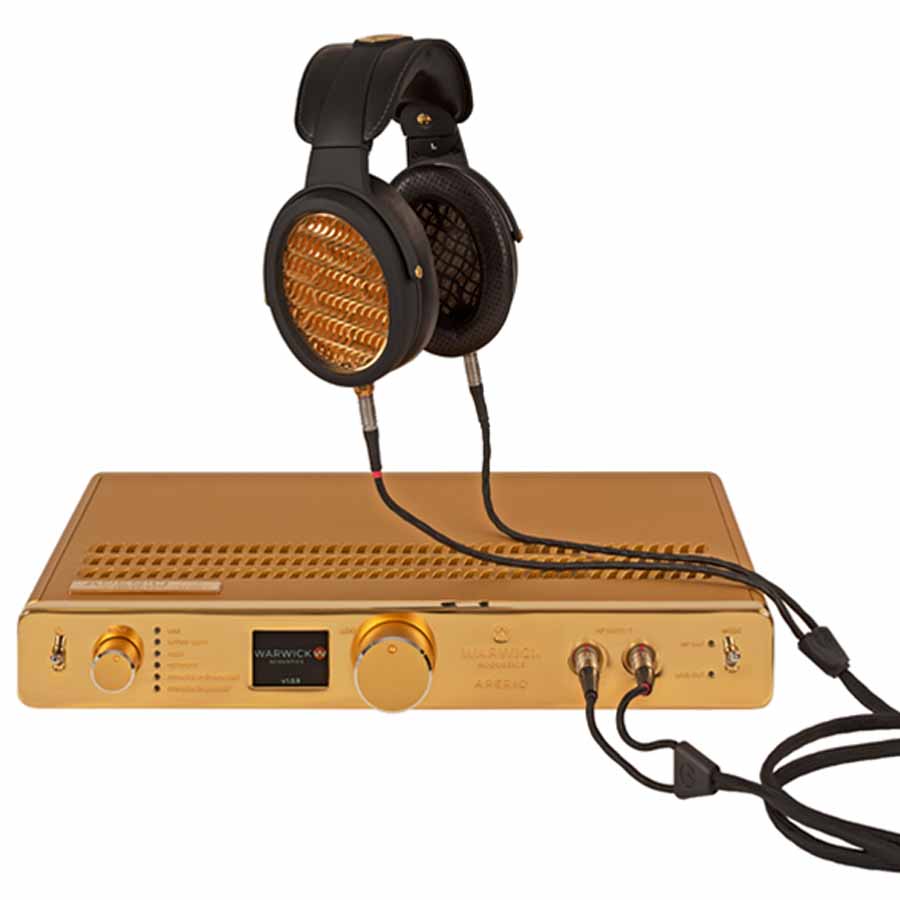
It is special to realize that the most expensive piece of hi-fi device that you ever stood in your test room was not a set of premium speakers or a 1 kilowatt amplifier, but headphones. Yes, you read that right, one of those things to put on your head. Price tag: 25,000 euros. Admittedly, it is a pair of headphones that, due to its electrostatic technology, are combined with its own DAC / amplifier and custom cables, including a USB cable and network cable that are optimized for this system according to the manufacturer. That price tag therefore applies to the entire package. Nevertheless, it remains a princely sum. Traditional hi-fi enthusiasts who see head-fi as the little budget brother of serious listening through speakers: forget it. For those looking for even more exclusive: there is also a gold version of the Aperio.
Does that make Warwick Acoustics’ Aperio the most expensive headphones we’ve ever listened to? Believe it or not, the answer is “no”. There is also the Sennheiser Orpheus 2 HE-1 , which taps at 60,000 euros or approximately 2.4 Aperios (or purely to provoke: 150 HD660s). However, the Germans have not built many units of those expensive headphones and, moreover, the accompanying amplifier is housed in heavy Italian marble (in ultimate hi-fi or summit-fi extravagance is commonplace). This usually requires reviewers to go to Sennheiser’s offices and test the HE-1 on site. However, Warwick Acoustics dared to send the Aperio, which turned out to be quite an undertaking in its own way.
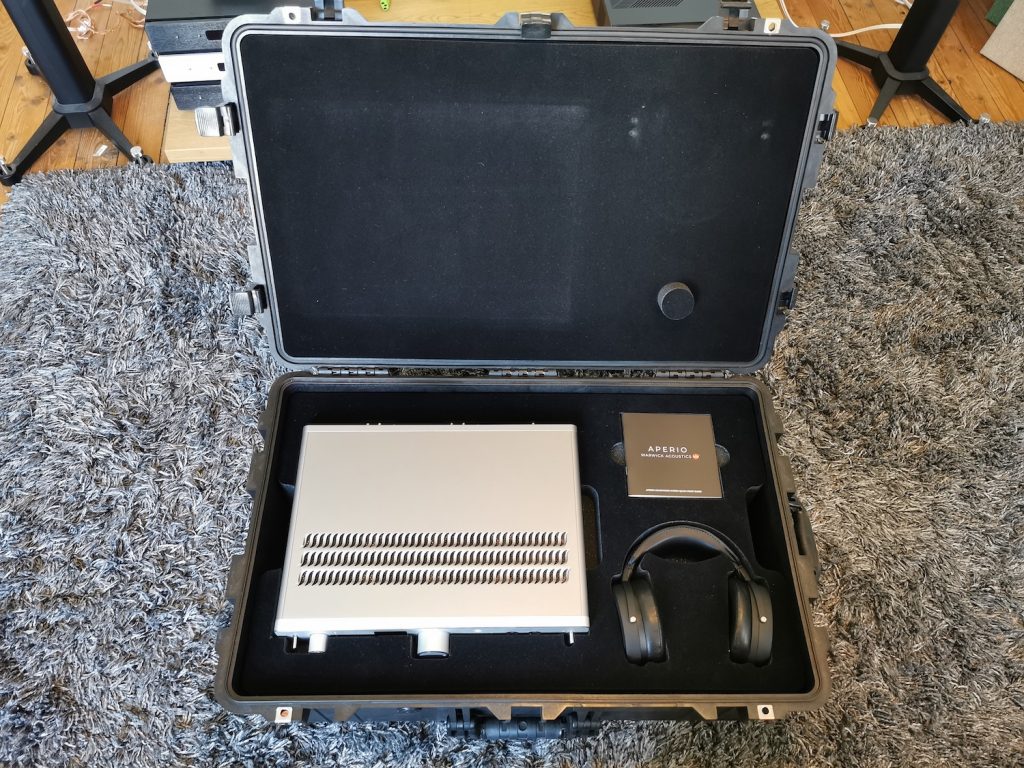
The headphones and its amplifier come in their own robust flight case from Pelikan, which we believe can easily survive a world tour with Iron Maiden and is worth a lot on its own. The total package therefore weighs so much that the flight case had to be equipped with wheels and handles. We will never again innocently say: “We will carry the headphones ourselves to our test room on the first floor”.
Electrostatic DNA
Warwick Acoustics is not a name that will ring a bell to many people. Is that strange? Not really. The head-fi world has its own stars, who are not necessarily the big names in hi-fi. But also: in every hobby, also in speaker-centric hi-fi but equally good for mountain biking or – we’re a bit guessing – competitive fishing, you will find the absolute top exclusive brands that are unknown to the general public.
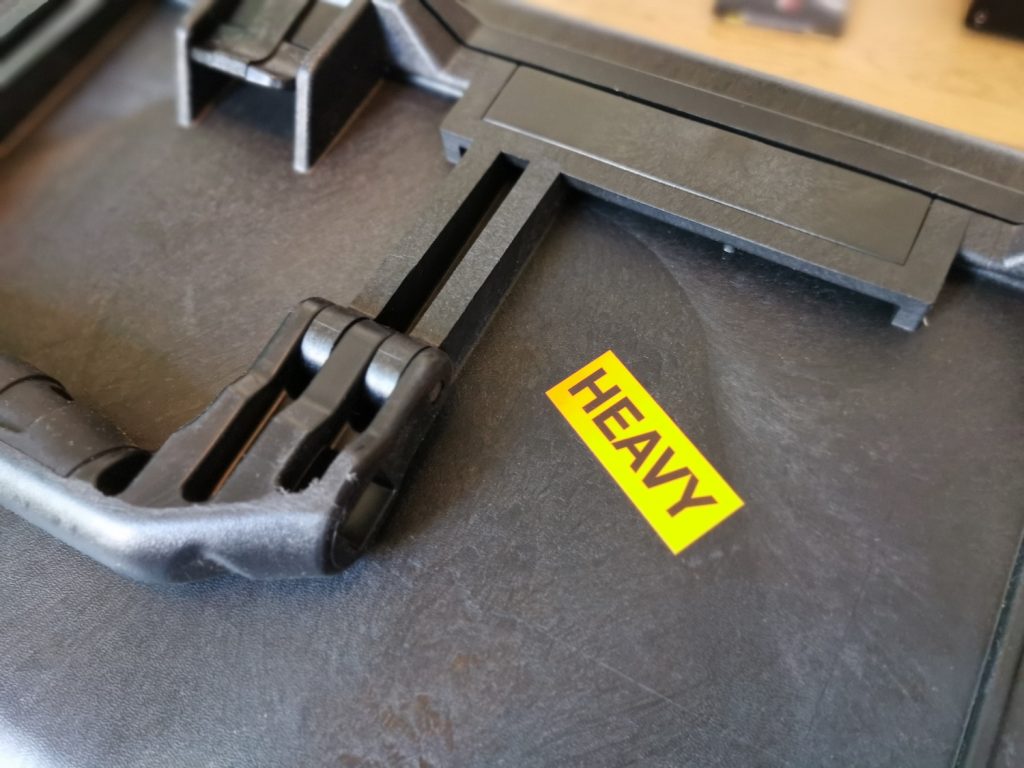
To better frame Warwick, this is Sonoma’s new name. We previously tested the 5,000-euro Sonoma One , also an all-in-one system with headphones in which electrostatic drivers play a leading role. However, the company changed its name to Warwick Acoustics when it also wanted to offer its technology to the lucrative automotive sector. The name also more clearly refers to the birthplace of the High Precision Electrostatic Laminate driver (HPEL) that powered the Sonoma One, the English University of Warwick.
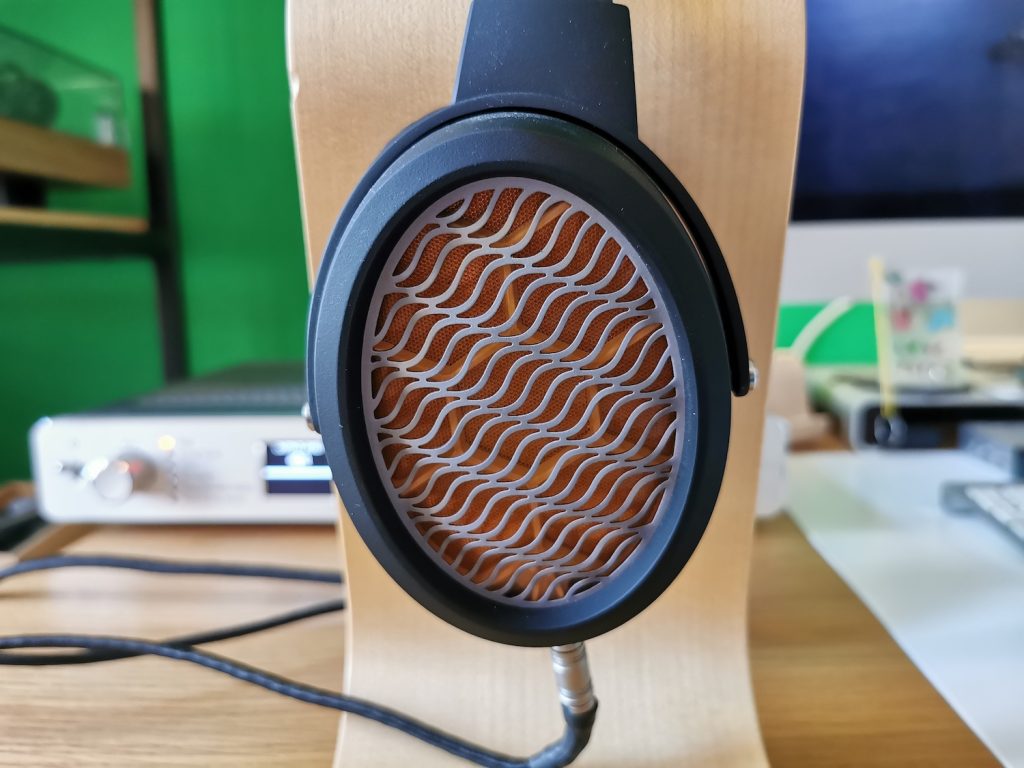
As the name indicates, this is an electrostatic driver. In a classic driver of this type, a membrane between two metal plates is set in motion by static electricity. That is a completely different way of working than with the dynamic drivers that are in most headphones and almost all speakers, and not quite the same as the magnetic planar drivers that can be found in more expensive headphones from brands such as Audeze and HiFiMan. A striking feature of electrostatic drivers is that they are driven by very high voltages, sometimes more than 1,000 volts. The fact that you need a very separate amplifier plus the more difficult production of electrostatic drivers means that these types of headphones are generally expensive to very expensive. Why do some music lovers choose it anyway? Electrostatic drivers have a small mass and therefore move quickly. Moreover, they hardly suffer from deformation.
Warwick Acoustics Aperio: The next step
The Warwick HPEL is a further development of the classic electrostatic driver, the most striking feature of which is that a wafer-thin membrane of 0.7 mm has a metal mesh on only one side. That made the driver in the Sonoma One even lighter and more responsive. The Warwick Acoustics Aperio takes that lightweight driver and makes it symmetrical again, with a metal mesh on both sides. The end result is the BD-HPEL driver with a longer stroke, less distortion and greater linear behavior, according to the Warwick designers.
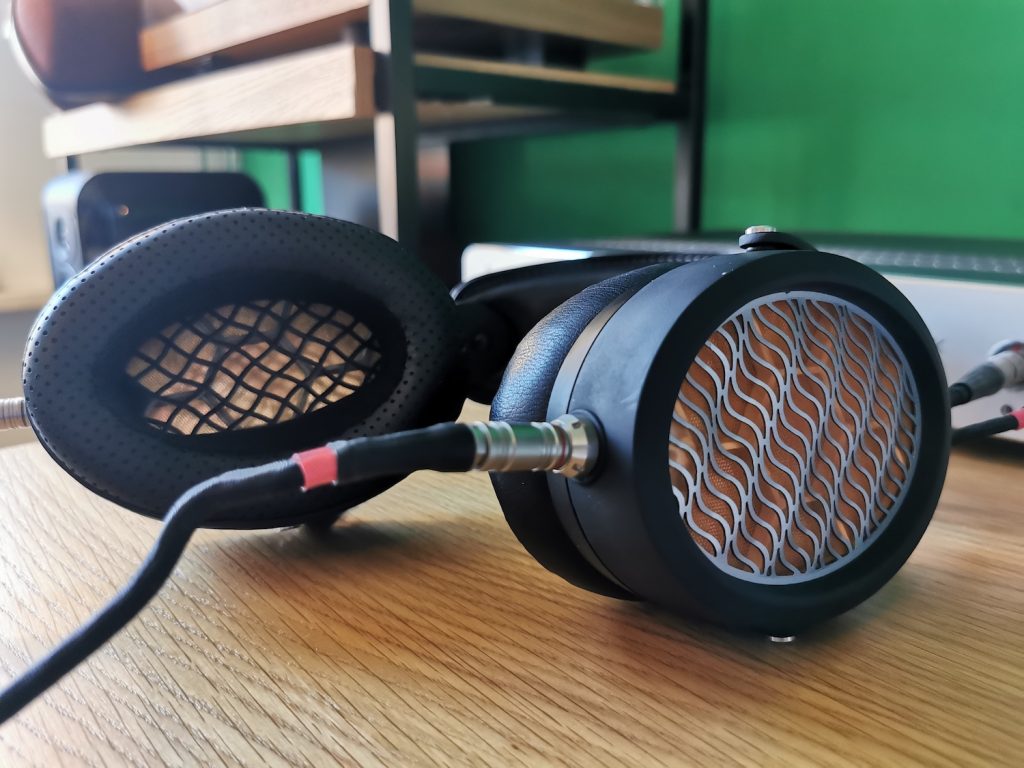
The drivers are in turn mounted in a frame made of magnesium, a material chosen for its low weight but also because it is very rigid. The construction is really a bit different from average headphones, because the driver seems to hang in the whole. You can look straight at it both on the inside and the outside, with only a fine metal grille on the outside for protection. The total weight of the headphones is just over 400 grams, which is not extremely light. At least on paper, in practice we didn’t find the Aperio headphones particularly heavy or awkward to wear on the head for a long time. Comfort is also great, although we have to say that proper placement on your head is crucial. If the ear pads are not perfectly in place, you will immediately notice the extinguished bass.
Preamp and more
When it comes to functionality, you can find the Aperio amplifier with few shortcomings. The abundance of inputs and the ability to switch between headphone and preamp mode mean you can fit the device into almost any system. Is headphone listening really your thing and something you do at a computer or a network transport? Then you use one of the digital inputs. Do you prefer your own network player with transport or CD player? Use the analog inputs, choose from balanced and unbalanced options. Do you want to use it as an all-in-one solution? The thing also includes a network module and supports quite a few streaming options. Very versatile, although we regret that the Aperio in network mode is not Roon Ready.
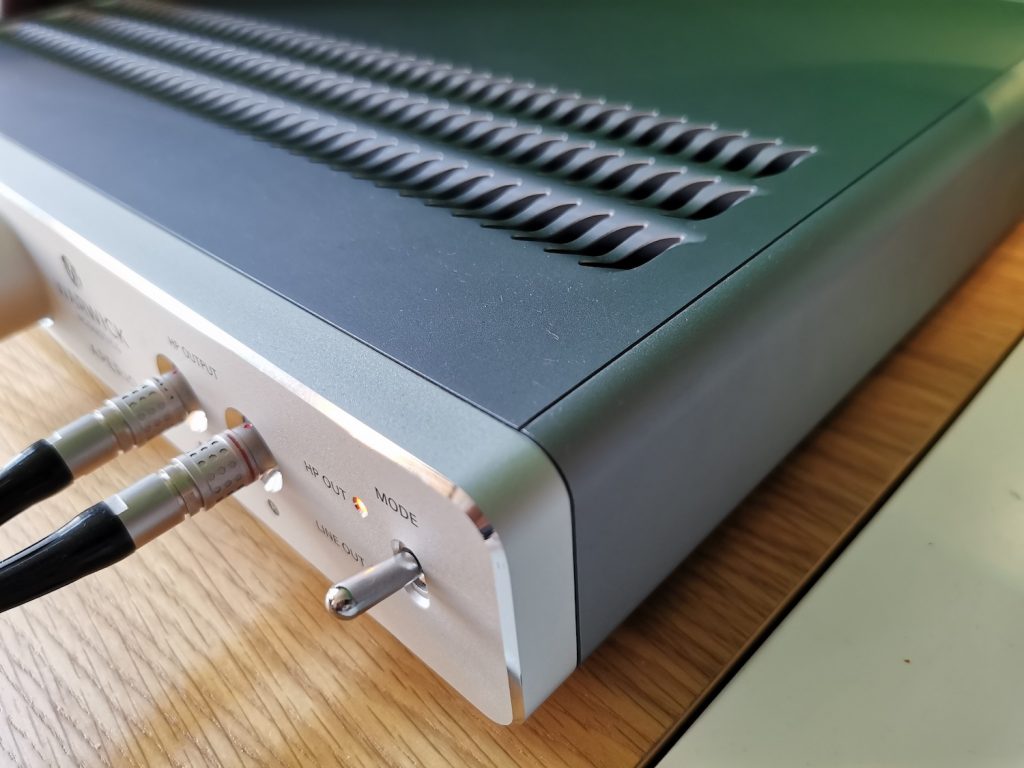
The digital to analog conversion section is based on a dual DAC implementation of two ESS9038 chips, providing support for hi-res PCM up to 384 kHz and DSD. You do not have to worry about finish level and build quality of this device. All parts seem to be of high quality, including the cables that run between the amplifier and the headphones. This is even more crucial here than usual, because it concerns an electrostatic system and a very high voltage flows across that cable.
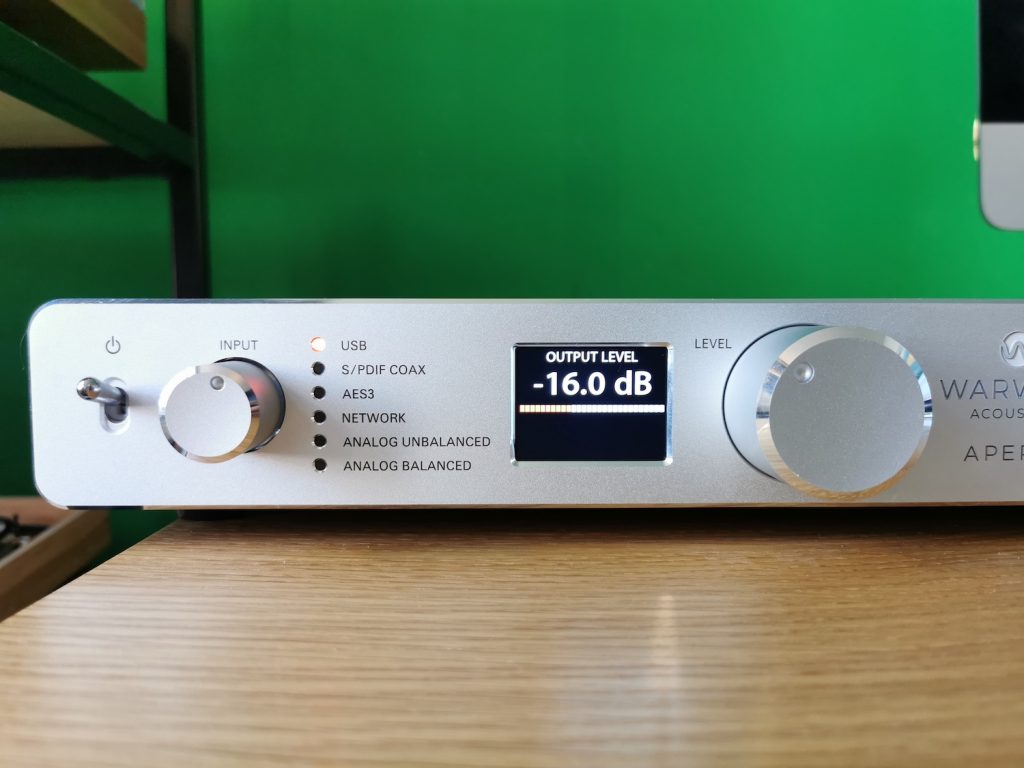
The buttons also give tactile satisfaction when you touch them. The on-off button or HP / line-out selector jumps with a solid ‘tjak’, the rotary knobs to select an input or change the volume offer some resistance to make a clear click. It all feels very high-quality, although we would have preferred a stepless knob for the volume control. It may be the only criticism you can really make on how the Aperio functions, but we found fine tuning the volume a bit tricky at times. Late at night it shouldn’t be all that loud either, if you turn the volume knob from the mute position, you go to -60 dB with a click, and the next click takes you to -26 dB. That is not very loud, but with some source material we did not have to go too far in order to approach the pain threshold.
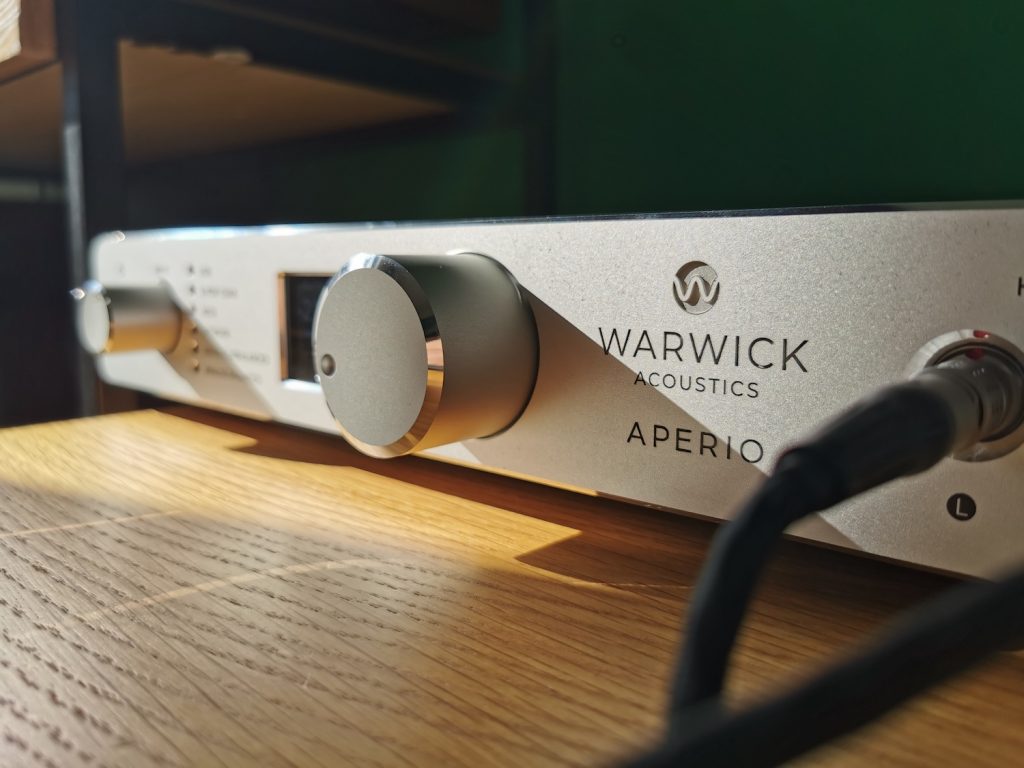
With very open headphones, we think that you should be careful not to listen too loudly unnoticed, and that is the case here. That danger is just a bit bigger with the Aperio because you are really rewarded if you dare to open the volume knob. For example, when we listened to the wonderful ‘The Edge of the Sea’, composed by Craig Armstrong and Calum Martin, and performed by the Scottish Ensemble, we really wanted to dive into the voice of Cecilia Weston on ‘Ballantyne: Movement 6’. Without realizing, we always kept turning the volume knob a bit. No problem in terms of playback quality, because it remains flawless even if you are listening at unhealthy high volume levels. Weston sings beautifully here in Gaellic, the word ‘magisterial’ is really appropriate, and she touches very high notes. They are displayed crystal clear on the Aperio system – but also a bit tricky, because those outliers were really too loud.
Not a trace of distortion
The Edge of the Sea is also a good example of music that seems to be made to the beat of the Aperio. This suite of compositions was inspired by psalm songs in Gaellic, as were mainly sung in the northern islands above Scotland itself. The vocal style is very special, not comparable to Celtic folk music as you might know from the Irish pub in your street. When we initially listened to it fast-fast, we first thought we heard music from an Orthodox tradition of the Balkans.
The impression we get when listening time and time again is that the synergy of the parts is excellent. With the Aperio, it’s all about a purity and speed that others can hardly match, which makes certain instruments extremely realistic. Ibrahim Malouf’s trumpet on ‘True Sorry’ – a test track we like to pull out – enters without the slightest trace of distortion. Hair pure. The freshness and speed also allows the great dynamic burst of the entire orchestra around minute 2:40 to be effortlessly taken through the Aperio.
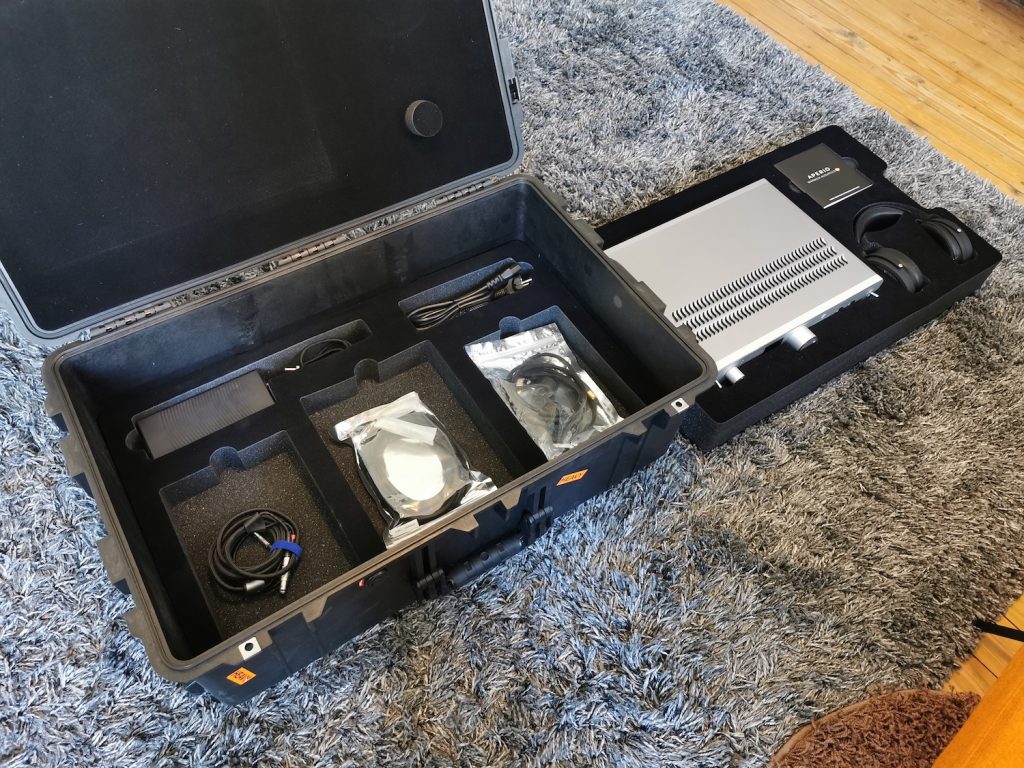
A casual question from a colleague (“Who is that singer with a voice that can match a trumpet?”) Brought us back to Dhafer Youssef, a Tunisian musical centipede who combines all kinds of traditional music styles with jazz and a voice that can reach incredibly high. Astonishing, but his old playing skills are also sublime. (For the non-connoisseurs: that is not ‘old’ as in ‘no longer young’, but as in ‘damn hard to play string instrument of North African origin’). ‘Birds Requim’ is one of his most interesting works, as Youssef conspires on this album with a gang of Swedish jazz musicians. The result initially resembles typical supercooled Nordic jazz, but it is precisely because of that voice and old that it evolves towards something an intriguing fusion of new and very old. We often find an old one on many headphones sound a bit tinny or we miss all the nuances when played finger-like, but we absolutely do not have that impression with the Aperio. The attack, the reverberation of the strings, the connotations of the wooden instrument itself, it’s all there.
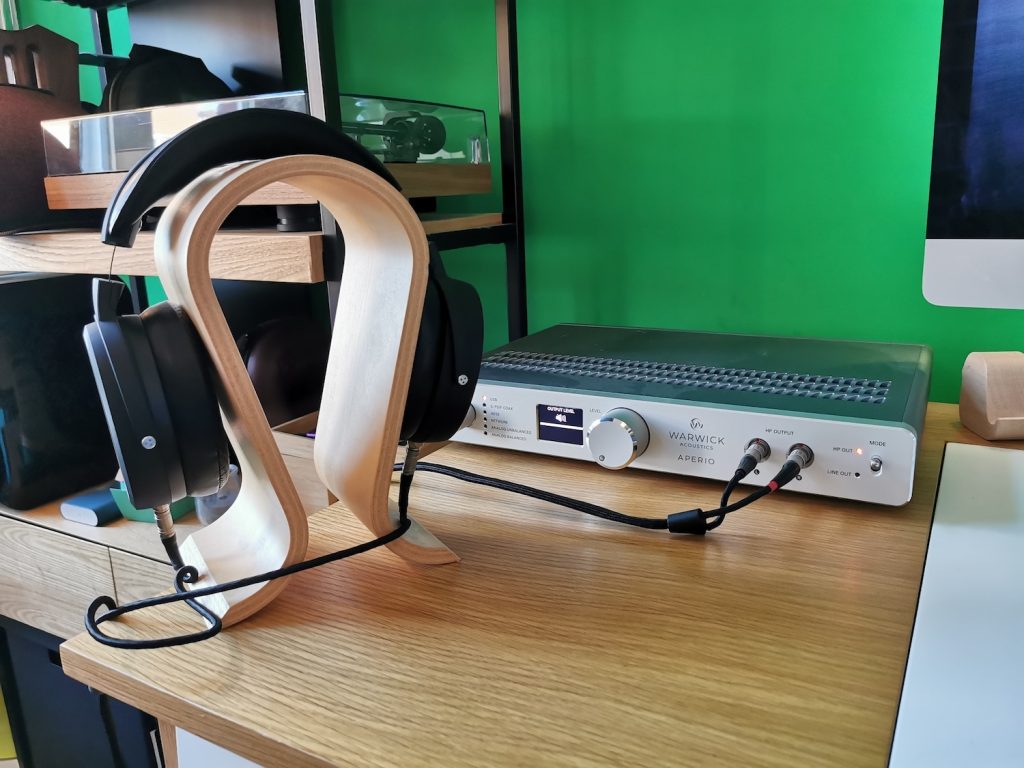
As you would expect from very open headphones, you also get a grand stage. Your music is not playing in your head, but is outside it. Still, we are a bit surprised that it is not an immense soundstage, such as the HD800S from Sennheiser. The Sonoma One seemed just a bit bigger in that respect, although here we rely on our test notes and the fallible audio memory. Is that different character good or bad? The downside is that the Aperio does give the bass a relatively large amount of body, without becoming real food for bassheads. It also makes these headphones slightly more universal than some flagships and different from average electrostats too. The tuning is also not only for refined audiophile recordings that you listen to with your little finger in the air.
Conclusion
We will not dwell too much on the price of the Aperio. If you have to choose between a newly fitted kitchen or this headphone system, then you better make the rational choice. The target audience of a product like this are people who (can) go for the ultimate music experience. Does the Aperio offer that? In our opinion, the answer is ‘yes’, with the consideration that someone who is looking for a system at this level should take the time to investigate all alternatives. One thing is: there is actually hardly a ready-made headphone system that you can compare with the Aperio. By mixing and matching you can put together something that is also summit-fi. But whether it will provide the same purity and neutrality is another question. Whether that character will fascinate you is of course a matter of taste.
The strength of the Warwick Acoustics system is that you are assured of top performance in one go, ranging from DA conversion over amplification to a reproduction that is characterized by insight and speed. And the flight case? That may be there too.
PLUS POINTS of Warwick Acoustics Aperio
- Build quality to fall in love with
- Characteristic fast, feather-light reproduction
- Very versatile DAC / amplifier, with many input options
- Easy to add to speaker system
MINUSES of Warwick Acoustics Aperio
- Will it be a car or headphones?
- Fine adjustment of low volume is a bit tricky
